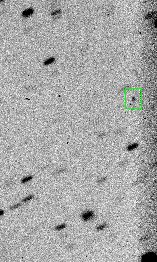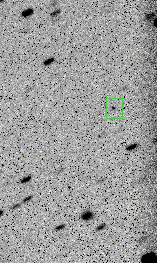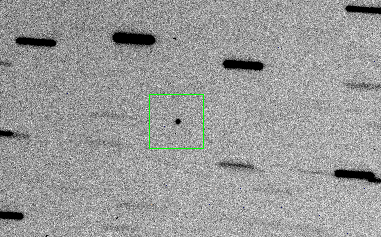Near Earth Asteroids (NEAs) are asteroids with an orbit which can bring them close to the Earth's orbit, and then potentially to the Earth itself. Some of them are listed as Potentially Hazardous Asteroids (PHAs). This denomination, clearly subjective, will depend on how close they could be to the Earth.... The present limit for that list is 0.05 astronomical units (AU), and the closest approach to the Earth of a known object for the next 100 years is 0.0026 AU, i.e. little more than the distance to the Moon. Have a look at the MPC web page on NEAs and PHAs.
NEAs are discovered generally when close to the Earth, where they are bright and have an apparent fast motion. They are then easy to detect among the other more classical asteroids. Dedicated observing programs on a few telescopes around the world make most of the discoveries of the NEAs. As soon as they are detected, predictions for the following nights are made available to all the observers who will try to follow them for getting enough positions to build a preliminary orbit which will confirm whether or not they are real NEAs. Very quickly they become difficult to observe, as their distance from the Earth is rapidly increasing, making them too faint for most of the instruments used in the asteroid observation community. If their orbit based on an arc of 10 days (a very short one for long term predictions) suggests that they could come close to the Earth, we need to have more observations for improving the orbital elements and the quality of the predictions. This is where a larger telescope, with the possibility of tracking a moving object, is needed. What you need is to be able to give a good astrometric position of a 21 to 23 mg object moving at 3 '/hr, or around 8 pixels/mn with STIS2 on MOS. CFHT is excellent for that kind of tracking, able to guide on a star and moving the guide probe according to the motion of the asteroid with a good accuracy.
The follow-up of NEAs started with a 3 nights run on MOS in May
1998 as a collobaration between UVic, DAO and CFHT, and has received two
more nights in October 1998. Since that, a very few observations have been
made on Discretionnary Time and on a small fraction of aobserving time
allocated partially for that purpose.
1998 HH49
We had observed this PHA at two occasions back
in 1998, extending its arc from 5 days to 171 days... Since then I have
tried a couple of time to recover it, but the attempts were unsuccessfull
due to the seeing conditions I finally recovered it on December 23
& 24, 2000 as part of the 00BF52 run. Moving at more than
70"/hr and at R~23.1, it is not an easy target. Thanks to the nice guiding
of the telescope following a star with the guide probe moving at a given
rate, it worked well. Here
is the MPEC.
1998 HH49 is still a PHA with a close approach
at 0.00785 au from the Earth on 2023 Oct. 17.
1998 FG2
This PHA was one of our targets back in 1998.
We had extended its orbit from 10 to 70 days and it was found as a PHA
with a closest approach in the next 100 years of 0.022 au in 2032. Recovered
as part of the 00AF30 run (mainly devoted to TNO's) on one night and on
D time a month later for a second night, its arc is now more than two years
long and its closest approach these coming 200 years is only of 0.032 au
on 2156 Mar. 5... You see the need for more than a short arc to asses
the "danger" of an asteroid! Here
is the MPEC.
1991 VB
This asteroid close to the Amor family (a=2.24 e=0.41)
had been observed only for one opposition in 1991/1992. It has been recovered
more than 7 years later using three pairs of images on Feb. 6, 7 &
8, for the first run of CFH12k. The corresponding MPEC is here
1998 HH49
In spite of a very poor weather on part of this run, HH49 has been
reobserved
in order to extend the available arc from 32 to 171 days. After the previous
run, HH49 was no longer on the PHA list..., but these new observations
made it one of the very few objects to come closer than 0.01 au to the
Earth in the XX1st century... What will give the observations at the next
opposition is still open!...
1998 FG02
The observations (here)
allowed to extend the orbital arc from 10 to 70 days.
Closest predicted approach to Earth before 2100 is 0.0220 AU in 2032.
1998 FH12
The observations (here) allowed to extend the orbital arc from 26 to 66 days.
Closest predicted approach to Earth before 2100 is 0.0397 AU in 2047.
1998 FL03
The observations (here) allowed to extend the orbital arc from 7 to 69 days.
Closest predicted approach to Earth before 2100 is 0.045AU in 2090.
1998 FL05
The observations (here) allowed to extend the orbital arc from 24 to 70 days.
It's not classified as a PHA...
1998 FW04
 |
 |
just on the edge of the MOS field. 10 mn exposures - 21 mn between the exposures. |
1998 HH49
 |
The observations (here) allowed to extend the orbital arc from 5 to 32 days. Even if 1998 HH49 is listed a s a PHA, it's not going to be close to
the Earth
|